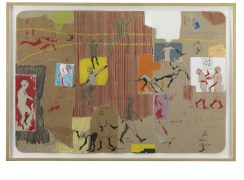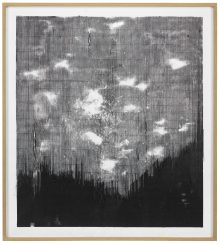
Artworks
Whether by taste or by necessity, artists have, since modern times, readily resorted to recycled materials, especially those from the world of packaging and transport. As early as the 19th century, oil paintings on cardboard appeared – a less expensive medium than canvas, allowing for quick pochades on the spot.
In the 20th century, the notion of reuse, of recovery, became predominant and a catalyst of inspiration. We see it in Picasso who, from 1912, abandons traditional sculpture and begins his series of Guitars, innovative assemblies of “poor” materials: wood, cardboard, that. He was then followed by Henri Laurens and Picabia, who in turn composed assemblages in the same spirit.
Later, in the tradition of Marcel Duchamp’s ready-mades, Warhol imposed his Brillo Box laundry detergent cartons and other transport packaging for Campbell’s Soup or Kellogg’s Corn Flakes in the 1960s, which he erected as works of art. The packaging was thus perceived as an artistic practice in its own right, and Warhol invited the viewer to change his or her perception of these boxes, which were destined for transport and then for disposal. This change of perception is such that they thus switch from low art to high art, from modest art to great art, from the utilitarian to the creative via pop art. Produced between 1974 and 1987, Warhol’s Times Capsules series goes even further, with a surprising sequence of 612 moving boxes, filled with various personal souvenirs of the artist, methodically classified by theme, and then closed and sent to a warehouse.

